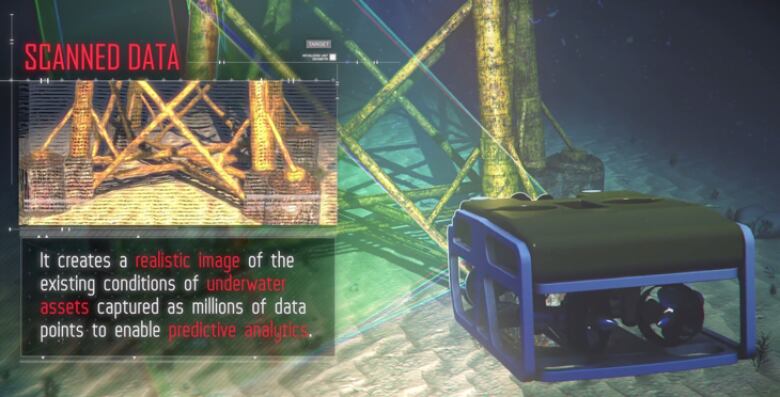Newfoundland technology a winner in search for new ways to inspect offshore wind farms
Kraken Robotics laser scanning technology used to predict problems before they happen

Newfoundland and Labrador company KrakenRobotics is among the winners of an international competition to find new ways to inspect offshore wind turbines.
The company'sGerman subsidiary,KrakenRobotik, was one of only four companies that won the Carbon Trust's Offshore Wind Accelerator (OWA) competition, which was funded by nine offshore wind developers and the government of Scotland.

Kraken won the competition with a new underwater laser imaging system that itdeveloped, which can be used to inspect the nearly 4,000 offshore wind turbines that currently exist in European waters.
The United Kingdom, Germany and Denmark are the biggest markets for offshore wind energy, and there's a big push there to find new ways to predict technical and mechanical problems before they happen.
Proud to be chosen as a winner of the Subsea Inspection Competition by the @CarbonTrust Offshore Wind Accelerator program. This is a large emerging market that will benefit from sensors and robotic systems. https://t.co/p2TVbmmwl2
—@KrakenRobotics"They are in a hostile, corrosive environment and we need to look at things like erosion and the cables that are connecting these devices together to make sure there's not going to be any failures," Kraken President Karl Kenny told CBC Radio's The Broadcast.
"We take our laser system, we put it on a robot and we send it down in the water and basically use the lasers to scan that underwater structure and in real time we can recreate it in 3D."
Change detection
Kraken is mostly known for its underwater sonar work, which has assisted in the discovery of an Avro Arrow prototype in Lake Ontario and the search for missingMalaysiaAirlines flight MH37.
However, Kenny said the new underwater laser imaging system is much more precise, able to detect and recreate objects in the millimetre range and recreate 3D models.

By using Krakenrobots to scan underwater turbine equipment on a regular basis, companies can then use machine learning also called artificial intelligence to predict changes that a human might miss during a visual inspection.
"The more high resolution data wecollect over time, wecan use machine learning to predict when there's going to be a failure or breakdown and advise the operator in advance of any catastrophe," Kenny said.
"Constant scans can predict those failures or when something needs to be maintained."
A growth industry
Kenny said many companies applied to the OWA competition, andKrakenis delighted to be one of the four companies selected at the end.
The win will give Kraken immediate access to senior level executives and technical management at some of the big companies developing offshore wind farms. Kenny said the same technology could also have have applications in the offshore oil industry in Newfoundland and Labrador.

With that in mind, he would like to see Canada and Newfoundland get more involved in harnessing offshore wind power, given the explosion of the technology he's witnessed in Europe and increasingly in the United States.
"We're from Newfoundland, we'vegot lots of winds," he said.
"There's almost 4,000 of these things operating in Europe. If it didn't make sense and they weren't making money they wouldn't be operating."
With files from CBC Radio's The Broadcast












_(720p).jpg)


 OFFICIAL HD MUSIC VIDEO.jpg)
.jpg)



























































































